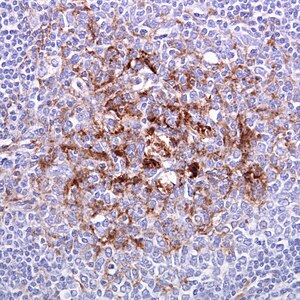Creutzfeldt-Jakob disease
| Creutzfeldt–Jakob disease | |
|---|---|
 |
|
| Tonsil biopsy in variant CJD. Prion protein immunostaining. | |
| Pronunciation | |
| Specialty | Neurology |
| Classification | |
|---|---|
| External resources |
Creutzfeldt–Jakob disease (CJD) is an incurable, and universally fatal neurodegenerative disease in humans. CJD is at times called the human form of mad cow disease (bovine spongiform encephalopathy or BSE) but only Variant Creutzfeldt–Jakob disease (vCJD) is acquired from BSE.
CJD is caused by a transmissible agent called a prion. Prions are misfolded proteins that replicate by converting their properly folded counterparts, in their host, to the same misfolded structure that they possess. CJD causes the brain tissue to degenerate rapidly, and as the disease destroys the brain, the brain develops tiny holes and its appearance changes to resemble that of a kitchen sponge when viewed under the microscope.
Rapid mental deterioration will spiral within months and worsen over time, leading to coma in most cases. The disease will invariably lead to death within one or two years, with a 1-year survival rate of just 10%. Direct causes of death include heart failure, respiratory failure, pneumonia and other infections.
Types of CJD include:
The first symptom of CJD is usually rapidly progressive dementia, leading to memory loss, personality changes, and hallucinations. Other frequently occurring features include anxiety, depression, paranoia, obsessive-compulsive symptoms, and psychosis. This is accompanied by physical problems such as speech impairment, jerky movements (myoclonus), balance and coordination dysfunction (ataxia), changes in gait, rigid posture, and seizures. In most patients, these symptoms are accompanied by involuntary movements and the appearance of an atypical, diagnostic electroencephalogram tracing. The duration of the disease varies greatly, but sporadic (non-inherited) CJD can be fatal within months or even weeks. Most victims die six months after initial symptoms appear, often of pneumonia due to impaired coughing reflexes. About 15% of patients survive for two or more years. Some patients have been known to live four to five years with mostly psychological symptoms while the disease progresses. It then causes more physical symptoms that lead to diagnosis, after which death usually occurs within a year.
...
Wikipedia
